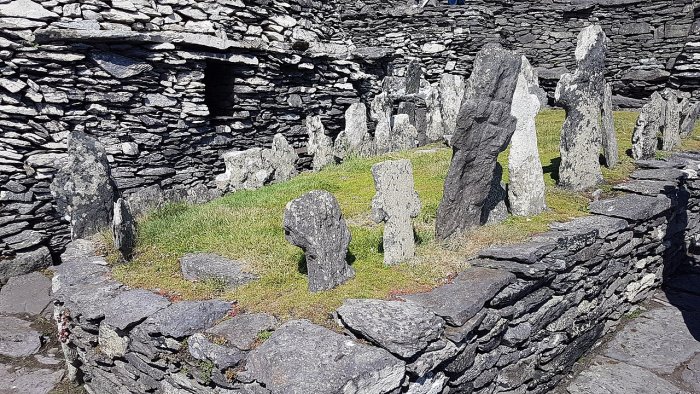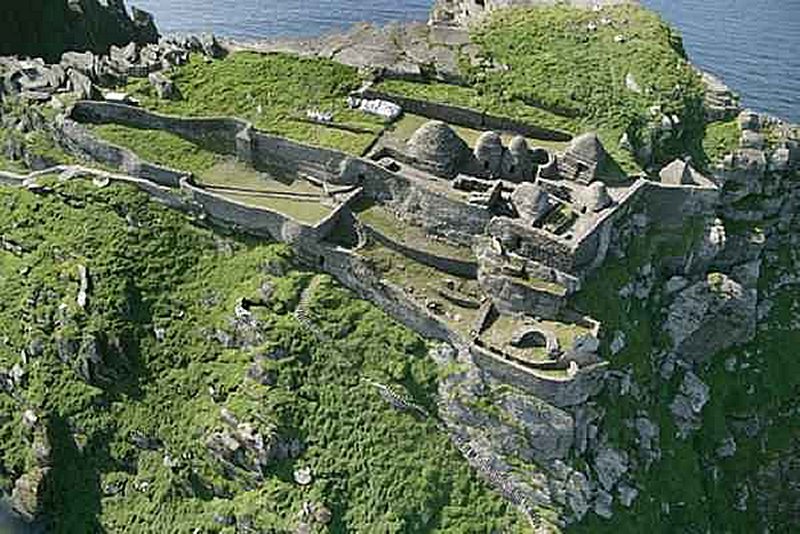Magnificent Skellig Michael And A 1,400-Year Old Christian Monastery
A. Sutherland - AncientPages.om - The magnificent Skellig Islands lie 8 miles (12 km) off the coast of Portmagee in South West Kerry. Rising majestically from the sea, Skellig Michael (or Great Skellig, one of the two Skellig Islands) towers 714ft (218 meters) above sea level.
The island's name is taken from the Irish language and means Michael's Rock. On the summit of this fantastic rock is a remarkably well-preserved 1,400-year-old Christian monastery, but it is not easy to visit Skellig Michael.
It is believed that the monastery was established in the 7th century on an island uninhabited earlier. Skelligs rocks are 350 million years old, dating from the Devonian Period; the area is remote and highly inaccessible.
The monastery, within an inner and outer enclosure, is situated on the sloping rock plateau at the northeastern summit. But despite the altitude, the location was perfectly chosen because it provided shelter and water collection: moreover, stone material was abundant, which enabled the building of the monastery.
 The drystone buildings on Skellig Michael were all corbelled. In this way, the interior space reduces as it rises up to form a dome-like structure. All the stones are positioned so that they slope outwards allowing for wind-borne rain to run off and so keep the building watertight. Credits: World Heritage Ireland
The drystone buildings on Skellig Michael were all corbelled. In this way, the interior space reduces as it rises up to form a dome-like structure. All the stones are positioned so that they slope outwards allowing for wind-borne rain to run off and so keep the building watertight. Credits: World Heritage Ireland
The early Irish Christian monks lived their Spartan life there until the 12th or 13th century in harsh conditions. Their life was undoubtedly more than difficult; during this time, the climate around Skellig Michael became colder and more prone to furious storms.
The remarkably well-preserved monastic enclosure of Skellig Michael is located 15 m (50 ft) below the northern peak on a long narrow terrace.
The central monastic area contains six beehive-shaped structures or huts called 'clochans,' the early traditional inverted boat-shaped oratory, and the medieval St. Michael's Church.
Other raised platforms contain incised crosses, cross-slabs, and the monk's graveyard with 22 early grave slabs. The gravestones have remained in their original positions.
The Monks Graveyard. The monastery at Skellig Michael. Image credit: Stinglehammer - CC BY-SA 4.0
The larger oratory, internally about 2.3 m (7.5 ft) high, has a white quartz cross, a later addition, set into the stones above the door on the outside.
The largest of the beehive huts were more sturdily built, 5 m (16.4 ft) high, with walls 1.8m (6 ft) thick at its base, with two cupboards and a double-lintelled door. Another, smaller oratory of later date stands on a northeastern shelf above the cliffs, with the boat landing far below.
The monastery was terraced due to the sheer sites of the Skelligs rocks. The lower terraces within the outer enclosure functioned as garden areas (for example, the Monks' Garden) for cultivation.
The monks constructed three sets of steps to their monastery, affording access during differing weather conditions. These are known as the East, South, and North Steps.
Skellig Michael (Sceilg Mhichíl) Monastery, Image credit: https://www.worldheritageireland.ie/
Only the South Steps are accessible to the public today. The South and North Steps meet at Christ's Saddle, the only reasonably flat part of the island, and continue as one as far as the monastery.
There were probably never more than a dozen monks on the island at any one time, plus an abbot. It must indeed have been a very lonesome existence for the monks, despite the faith which initiated their decision to move there.
The monks' graveyard is located to the east of the Large Oratory. The series of crosses set into the west side are in their original locations. These crosses are roughly shaped, and some have plain incised decorations.
Clocháns; dry-stone huts with a corbel roofs. Image credit: Towel401 - CC BY-SA 4.0
Why the monks decided to build a monastery in such a remote and inaccessible place remains unknown. One possibility is they tried to escape Viking raids, and the monastic settlement on Great Skellig became the sanctuary of last resort.
The monastery survived several Viking raids in the 9th century, notably in 823 A.D. It was later significantly expanded with a new chapel built around 1000 A.D.
Sometime in the 12th century, the monks abandoned Skellig Michael and moved to the Augustinian Monastery at Ballinskelligs, near Waterville in County Kerry on the mainland.
Copyright © AncientPages.com All rights reserved. This material may not be published, broadcast, rewritten or redistributed in whole or part without the express written permission of AncientPages.com
Expand for referencesMore From Ancient Pages
-
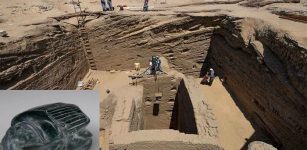 Unique Tomb Of Egyptian Commander Discovered In Abusir Sheds Light On ‘Globalisation’ In Ancient World
Archaeology | Jul 20, 2022
Unique Tomb Of Egyptian Commander Discovered In Abusir Sheds Light On ‘Globalisation’ In Ancient World
Archaeology | Jul 20, 2022 -
 Ancient Mesoamerican Board Games ‘Patollis’ Discovered In Mexico
Archaeology | Sep 9, 2024
Ancient Mesoamerican Board Games ‘Patollis’ Discovered In Mexico
Archaeology | Sep 9, 2024 -
 Vatican Secrets – Dangerous Knowledge And Invention That Could Alter History
Featured Stories | Dec 14, 2018
Vatican Secrets – Dangerous Knowledge And Invention That Could Alter History
Featured Stories | Dec 14, 2018 -
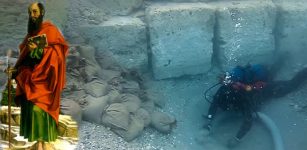 Ruins Of Biblical City Of Corinth Discovered Underwater – Giant Monuments and Remains Of Lighthouse Still Well-Preserved
Archaeology | Dec 19, 2017
Ruins Of Biblical City Of Corinth Discovered Underwater – Giant Monuments and Remains Of Lighthouse Still Well-Preserved
Archaeology | Dec 19, 2017 -
 Paleontologists Find New Predatory Dinosaur With Unique ‘Eyebrow’
Paleontology | Aug 29, 2024
Paleontologists Find New Predatory Dinosaur With Unique ‘Eyebrow’
Paleontology | Aug 29, 2024 -
 Mysterious Bones May Re-Write History Of North America – Humans Were Present On The Continent 10 Times Earlier
Archaeology | May 8, 2017
Mysterious Bones May Re-Write History Of North America – Humans Were Present On The Continent 10 Times Earlier
Archaeology | May 8, 2017 -
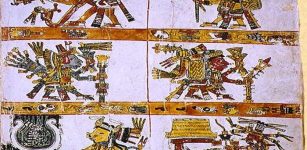 Codex Borgia: Pre-Columbian Mexican Manuscript Of Great Importance
Ancient Traditions And Customs | Sep 7, 2016
Codex Borgia: Pre-Columbian Mexican Manuscript Of Great Importance
Ancient Traditions And Customs | Sep 7, 2016 -
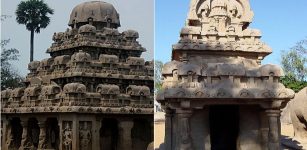 Mahabalipuram: Ancient Ruined City And Its Marvellous Rock-Cut Architecture In South India
Featured Stories | Jul 25, 2021
Mahabalipuram: Ancient Ruined City And Its Marvellous Rock-Cut Architecture In South India
Featured Stories | Jul 25, 2021 -
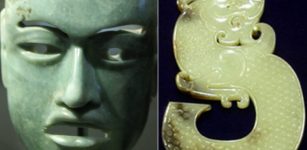 Secret Ancient Powers Of Jade: Sacred Green Healing Stone That Can Conquer Time And Guarantee Immortality
Artifacts | Oct 1, 2016
Secret Ancient Powers Of Jade: Sacred Green Healing Stone That Can Conquer Time And Guarantee Immortality
Artifacts | Oct 1, 2016 -
 Something Unexpected Stopped Mongol Hordes From Conquering Europe
Featured Stories | Jul 11, 2017
Something Unexpected Stopped Mongol Hordes From Conquering Europe
Featured Stories | Jul 11, 2017 -
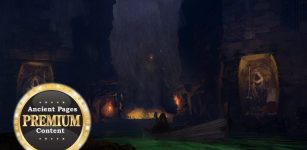 What Happened To The Ancient Tribe That Entered A Secret Underground World And Never Came Back?
Featured Stories | Feb 1, 2021
What Happened To The Ancient Tribe That Entered A Secret Underground World And Never Came Back?
Featured Stories | Feb 1, 2021 -
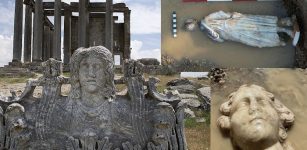 More Greek Gods’ Heads And A Life-Sized Statue Of A Man Unearthed In The Ancient City Of Aizanoi
Archaeology | Dec 28, 2022
More Greek Gods’ Heads And A Life-Sized Statue Of A Man Unearthed In The Ancient City Of Aizanoi
Archaeology | Dec 28, 2022 -
 On This Day In History: Battle Of The Rhyndacus – Oct 15, 1211
News | Oct 15, 2015
On This Day In History: Battle Of The Rhyndacus – Oct 15, 1211
News | Oct 15, 2015 -
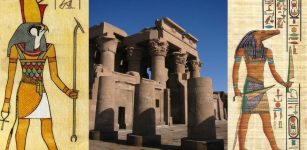 Unusual Double Temple Of Kom Ombo Dedicated To Crocodile God Sobek And Falcon-Headed God Horus
Featured Stories | Mar 14, 2016
Unusual Double Temple Of Kom Ombo Dedicated To Crocodile God Sobek And Falcon-Headed God Horus
Featured Stories | Mar 14, 2016 -
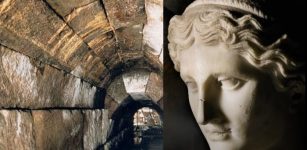 Venus Cloacina: Roman Goddess Of Sewers And Drains
Featured Stories | Dec 19, 2019
Venus Cloacina: Roman Goddess Of Sewers And Drains
Featured Stories | Dec 19, 2019 -
 Ancient Tomb Belonging To Princess Of Ancient Nomads Discovered In China
Archaeology | Dec 20, 2015
Ancient Tomb Belonging To Princess Of Ancient Nomads Discovered In China
Archaeology | Dec 20, 2015 -
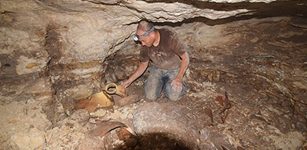 A 2000-Year-Old Jewish Settlement Near Bet Shemesh – Unearthed
Archaeology | Mar 30, 2017
A 2000-Year-Old Jewish Settlement Near Bet Shemesh – Unearthed
Archaeology | Mar 30, 2017 -
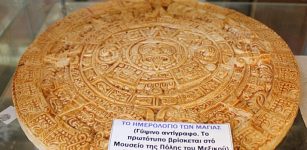 On This Day In History: Mesoamerican Long Count Calendar Begins – On August 11, 3114 B.C
News | Aug 11, 2016
On This Day In History: Mesoamerican Long Count Calendar Begins – On August 11, 3114 B.C
News | Aug 11, 2016 -
 How The Strange Dream Of Roman Emperor Constantine Changed History
Ancient History Facts | Sep 29, 2017
How The Strange Dream Of Roman Emperor Constantine Changed History
Ancient History Facts | Sep 29, 2017 -
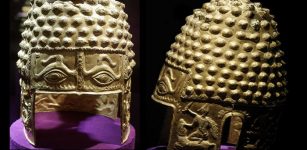 Ancient Dacian Gold Helmet With Piercing Evil Eyes
Artifacts | Jan 4, 2019
Ancient Dacian Gold Helmet With Piercing Evil Eyes
Artifacts | Jan 4, 2019


